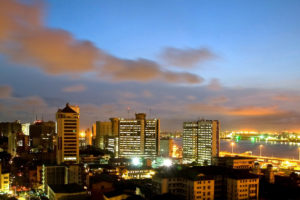Recent studies suggest that Lagos, Nigeria, could become the world’s most populated city by 2100 with as many as 100 million residents.
Tokyo is currently the largest city by population, with 38.1 million people living there (as of 2016).
The study formulated its predictions based on the birth and mortality rates, and the growth of urbanization, in Lagos.
Everyone knows cities can be crowded, but some of them are growing quicker than we might think.
One such location is Lagos, Nigeria, which could soon become the world’s most populated city with close to 100 million residents by the end of the century, according to researchers from the University of Ontario Institute of Technology.
According to Daniel Hoornweg, Associate Professor at the University of Ontario Institute of Technology, cities in Africa are predicted to see high increases in their populations in the next few years, with Lagos on the forefront to hit record numbers.
“Lagos, Dar Es Salaam, Kinshasa: These are the cities that are looking at four-to five-fold increases in population; by the end of the century, the lion’s share of large cities, the top 20 if you will, most of those will be in Africa,” he said in a recent interview with ‘Voice of America.’
Hoornweg co-authored the 2016 study “Population predictions for the world’s largest cities in the 21st century,” which analysed urbanisation rates across cities, drawing on a variety of data sets to make population projections across the world’s largest cities from 2010 through 2100.
Using data from the United Nations’ World Urbanization Prospects, which predicts population growth and urbanisation rates through 2050 based on birth rates, mortality rates, and the current urban to rural ratio in cities, researchers projected what the population levels would be in these cities in 2100 under three different possible schemes with varying levels of sustainability, reduction of inequality, and speed of technological development.


Lagos’ projected population by 2100 ranges from 61 million to 100 million, while the total world population could range from 6.9 billion to 13.1 billion by 2100 depending on each situation.
To put the numbers in perspective, Tokyo is currently the most populated city with around 38.1 million residents in 2016.
“We are now seeing the urbanisation wave headed through China, it is toward the latter part of its urbanisation; And now it is headed for India, and then we will see it culminate in the big cities of sub-Saharan Africa,” Hoornweg recently said to ‘Voice Of America’ regarding current urbanisation patterns.
The study found that sub-Saharan Africa is projected to see the most dramatic rise of its large urban areas, while a total of 47 cities that are expected to make up the 101 largest in the world by 2100 will be coastal.
The numbers are meant to be seen as an educated guess; a variety of variables may affect their outcome.
How these cities are governed will also be a determining factor in whether or not the increased urbanisation will result in higher levels of poverty, depleted resources, and more residents living in slums, or whether they will become sustainable hubs that provide increased economic development and growth.
That being said, Hoornweg still feels urban environments can breed an improved quality of life.
“Cities, by their nature, because of a more compact lifestyle, can provide a quality of life higher than anywhere else with less energy per unit of GDP,” he told ‘Voice of America.’ “So, cities actually provide a really important opportunity; we will not get to global sustainability without big cities.”
This article was written by Talia Avakian and originally published in Travel + Leisure






























